Surfing Adventures at South Padre Island: A Complete Guide

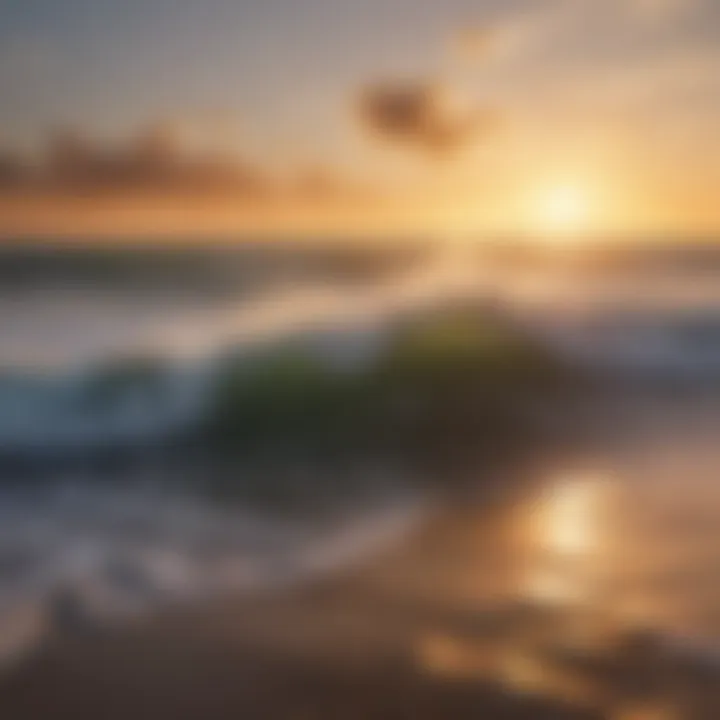
Intro
Surfing at South Padre Island isn't just a sport; it's a culture, a lifestyle that intertwines with the very essence of the island itself. As you stand on the golden sands, watching the waves gently break along the shore, you can feel the palpable excitement that showcases the vibrant surfing community here. Whether you’re a seasoned pro or a hesitant novice, the waters off this Texas coast have something for everyone.
From the novice who struggles to find their balance on a foam board to the expert who dances effortlessly on the crest of a wave, South Padre Island presents diverse opportunities. With its lively local surf scene, rich traditions, and stunning oceanic views, the island beckons surfers far and wide.
This guide will navigate through the distinct surfing characteristics that set South Padre apart. We will explore the best surfing spots, delve into wave patterns, share tips on surfboard choices, and highlight crucial safety precautions. Additionally, it's vital to understand our environmental impact, so we'll touch on conservation efforts crucial for keeping these resources pristine.
So grab your sunscreen and wax; let’s embark on this surfing exploration of South Padre Island together.
Prologue to South Padre Island Surfing
Surfing at South Padre Island presents a dynamic blend of thrill and tranquility, making it a top destination for both novice and seasoned surfers alike. The area is not just about riding the waves; it's a rich tapestry of culture, environment, and unique experiences waiting to be uncovered. Here, surfing transcends being merely a sport and evolves into a lifestyle, one deeply entwined with nature's rhythms and the zest of the local community.
Geographical Overview
Nestled in the Gulf of Mexico, South Padre Island offers a unique geographical setting that significantly influences surf conditions. The island is about 34 miles long with flat, sandy beaches and a shallow sea, which allows waves to build in a way that's perfect for surfing. The coastline provides ample opportunities for catching waves—different breaks cater to various skill levels, from gentle rolls that greet beginners to more formidable conditions for the more adventurous. Moreover, the proximity to the Laguna Madre creates a stunning backdrop where the sparkling waters meet the horizon, enhancing the surfing experience with remarkable scenery.
It's worth noting that this area experiences a mixture of east, southeast, and even occasional northerly swells—perfectly timed by seasonal patterns and wind shifts. This variability not only keeps the surfing experience fresh but challenges surfers to adapt and improve their skills with each outing. And let’s not overlook the subtropical climate, which allows for year-round surfing, a rare gem in the surf world.
Historical Context of Surfing
The history of surfing on South Padre Island holds tales of evolution and excitement. While the sport has roots that trace back to ancient Hawaiian culture, its introduction to this Texan oasis started picking up steam in the mid-20th century. Surfers began to flock here, finding solace in the warm waters and gentle breezes that this coastal paradise offered.
In the 1960s and 70s, surfing gained significant traction as surfboards evolved—lighter, more aerodynamic designs made it easier for surfers to ride the waves. During this era, local surf shops began popping up, and small competitions soon followed, fostering a tight-knit surfing culture among enthusiasts.
"The surf scene here is like a family; we share a passion, a spirit that runs deeper than just riding waves." - A local instructor shares, echoing the sentiment of community.
Today, the historical context contributes to an ever-growing respect for the ocean, with many local surfers engaging in environmental activism to protect their beloved coastlines. This evolution reflects the importance of sustainability in surfing, ensuring that future generations can enjoy the beautiful beaches and waves South Padre Island has to offer.
Understanding the Surf Conditions
Understanding the surf conditions is crucial for anyone looking to hit the waves at South Padre Island. Knowing the specific elements that affect surf conditions can make all the difference between a thrilling ride and a frustrating experience. For both seasoned surfers and beginners alike, being aware of the surf conditions not only elevates the experience but also enhances safety.
When it comes to surfing, the three key elements to consider are wave patterns, seasonal changes, and wind and tide influences. Each of these factors contributes to the unique surfing landscape of South Padre Island, shaping the types of waves you’ll encounter and the overall surfing conditions.
Wave Patterns
Wave patterns at South Padre Island can be as varied as a painter's palette. The island benefits from a mix of swells and wind patterns that come from both the Gulf of Mexico and the Atlantic Ocean. In general, the size and frequency of waves depend largely on the direction and strength of the prevailing wind. For instance, when a southwest wind kicks in, surfers can expect long, rolling waves that are perfect for riding.
- Types of Waves:
- Beach Breaks: These occur when waves break over sandy bottoms. They are common in South Padre, providing multiple spots for surfers to catch a wave.
- Point Breaks: Less common, these waves break over rocks or reefs, offering powerful rides but requiring more skill.
The experience can vary based on the local geography, as the shape of the coastline can intensify or mellow the waves that hit the shore. Surfers who take time to study the wave patterns will find their time on the water much more enjoyable.
Seasonal Changes
Seasons play a pivotal role in surfing conditions around South Padre Island. Generally, spring and summer offer warm waters and more laid-back waves, ideal for beginners. This is when crowds flock to the beaches for fun-filled days of sun and surf.
As the weather shifts to fall and winter, surfers may experience larger swells. This is considered the prime season for experienced surfers looking for a more significant challenge.
- Spring/Summer:
- Fall/Winter:
- Warm waters
- Smaller, more forgiving waves
- Cooler temperatures
- Bigger waves with more power
Before heading out, it’s wise to check the local surf reports, as these can give a real-time glimpse into how the conditions are shaping up based on the season.
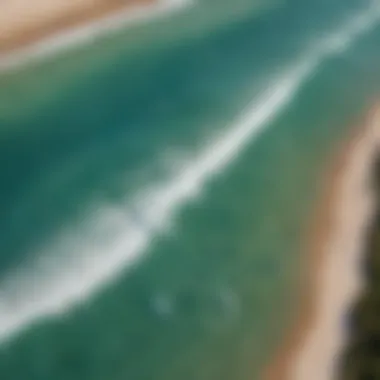
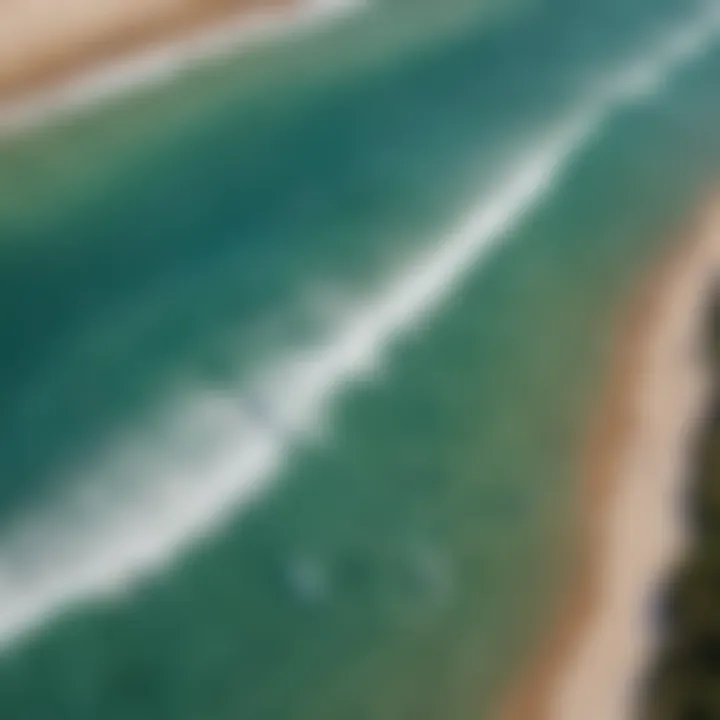
Wind and Tide Influences
Wind and tides are like the duo behind a magic trick—hard to see but essential to the performance. Wind can significantly alter surf conditions by affecting both the size and shape of waves. A gusty wind can create choppy waters, making it difficult to catch a clean wave. Conversely, calm winds often lead to smoother conditions, ideal for catching those perfect rides.
Tides also play a big part in the surfing experience. High tide can bring waves closer to the shore, while low tide may expose more of the ocean floor, creating different surf breaks. Understanding the tidal cycles can help surfers choose the best time to hit the water for optimal conditions.
"Timing is everything. Surfers often say that waiting for the tide to turn can be just as important as picking the right surfboard."
In short, being aware of wind and tide influences can greatly enhance safety and surfing success at South Padre Island.
Choosing the Right Surfboard
When it comes to surfing, choosing the right surfboard isn’t just about style. It’s a crucial decision that can greatly influence your experience on the waves. Each board type serves different purposes, from how well you can manage the surf conditions to your level of skill. For beginners, having the right board can mean the difference between a fun day at the beach or frustration in the water. All surfers, no matter their experience, should focus on elements like size, shape, and material when selecting their board. This section aims to guide surfers through understanding these key aspects.
Types of Surfboards
Before even thinking about hitting the water, it helps to know the variety of surfboards available. Each type has its own unique characteristics suited for various surfing styles and conditions:
- Shortboards: These are typically around six feet long. They're agile and fast, perfect for more experienced surfers who want to perform tricks and sharp turns. However, they can be challenging for newbies.
- Longboards: Ranging from 8 to 12 feet, longboards are well-known for their stability. They are easier for beginners to balance on and are great for catching smaller waves.
- Fishboards: These boards are shorter and wider with a distinctive fish tail design. They’re perfect for handling choppy waters and are favored by surfers who enjoy riding smaller, less powerful waves.
- Funboards: Bridging the gap between shortboards and longboards, funboards are versatile and provide increased stability. They are great for surfers at various skill levels who want to enjoy a little bit of everything.
In South Padre Island, where the waves can vary, selecting the appropriate surfboard type can make surfing more enjoyable and safe.
Personal Preferences
Choosing a surfboard isn't just a matter of practicality—it's also about personal preference. Each surfer has a unique style that influences their choice of board:
- Skill Level: A beginner might feel more comfortable on a longer board, which offers better stability, while advanced surfers may prefer the nimbleness of a shortboard to execute complex maneuvers.
- Style of Surfing: Some surfers favor leisurely rides on smaller waves, making longboards or funboards their favorites. Others seek out adrenaline-pumping reef breaks, opting for shortboards that allow for quick turns and tight maneuvers.
- Weight and Height: Your physical attributes play a role in board choosing as well. Heavier surfers often benefit from wider boards that can support their weight, while shorter surfers might want to go for lighter options for easier handling.
- Aesthetic Appeal: Let’s be honest; sometimes the decision comes down to the look of the board. While performance matters, finding a design that resonates with your vibe can be equally important.
"The right surfboard is more than just a piece of equipment; it's an extension of the surfer."
Ultimately, choosing the right surfboard at South Padre Island is about blending practical considerations with personal style, enhancing not just your performance, but your overall enjoyment of the sport.
Best Beaches for Surfing in South Padre Island
Surfing at South Padre Island isn’t just a sport; it’s a way of life for many, woven into the local culture and drawn from the stunning natural landscapes. The selection of beaches can significantly influence a surfer's experience, making the right choice crucial for both beginners and seasoned wave riders alike. Each beach offers different wave conditions, crowd sizes, and atmospheres. Knowing the lay of the land helps surfers up their game while enjoying the picturesque backdrops.
Popular Surf Spots
When it comes to surfing, a few spots emerge as fan favorites among locals and visitors alike. These places attract surfers not just for their waves but for the vibrant scene that surrounds them.
- Isla Blanca Park: This spot is often the go-to for many due to its fantastic waves and sandy shores. It’s well-known for hosting various surfing events, and with its protective jetties, it offers a kind of consistency in wave size and shape.
- South Padre Island Surf Company Beach: A relatively quieter place, this area allows surfers to hone their skills without the stress of a heavy crowd. Waves here can be a little more forgiving, making it perfect for those still finding their balance on the board.
- Access to the Beach: Another popular location is the access roads along Padre Boulevard. Almost every street leads to the beach, making it easy for surfers to paddle out. Depending on the tides and wind, various access points can yield different surfing experiences throughout the day.
Hidden Gems
While the popular spots offer a lively atmosphere, there are lesser-known locations that hold their own charm and can often lead to a more intimate surfing encounter.
- Far South Beach: This part feels worlds away from the bustle, where the waves break gently, creating the perfect environment for beginners. You might encounter fewer surfers here, allowing for a more personal experience with the ocean.
- Malaquite Beach: Although it's a bit farther at the north end of Padre Island, here, the untouched beauty draws less crowded waves that can be phenomenal on a good day. It provides the sense of solitude many surfers crave, coupled with stunning sunrises to boot.
- Fish Pass: Located south of the public beaches, this spot has a reputation for surprising good swells. It remains mostly undiscovered by tourists, providing a refreshing experience away from the main areas.
"Some of the best moments in surfing come not from the waves themselves but from the environment in which you find them. Seeking out those hidden gems can be a game-changer for your surf experience."
The diversity of surfing environments on South Padre Island really caters to all tastes, from thrilling competition near Isla Blanca Park to serene solitude at Far South Beach. Whatever your skill level or mood, the right beach is waiting for you.
Local Surf Culture
The surf culture at South Padre Island is not just a pastime; it’s a way of life that ties together locals and visitors alike. This vibrant community thrives on a shared love for the ocean and surfing, shaping the daily routine and social fabric of the area. The atmosphere is welcoming, and there’s a palpable sense of camaraderie among surfers. Being part of this culture isn’t solely about riding the waves; it also encompasses respect for the environment, the traditions of surfing, and the connections forged with fellow enthusiasts.
Each individual who steps onto the board contributes to the evolving story of this coastal gem. Surfing isn’t merely an activity here; it’s a cultural statement, a narrative that speaks to the heart of those who embrace it. The interactions between surfers, whether they’re swapping stories, giving each other tips, or simply sharing a moment on the beach, add layers of community spirit.
To understand the surf culture deeply, one must grasp the significance of mentorship and the passing-down of knowledge. Experienced surfers often take on the role of guides for beginners, fostering a sense of lineage and continuity. This tradition not only promotes skill development but also reinforces values of patience, respect, and respect for the ocean. Being mentored can enrich a beginner’s experience, teaching them not just about surfing techniques but about the local conditions and etiquette.
Another vital aspect of local surf culture involves fostering environmental awareness. Surfers often consider themselves stewards of the sea, actively participating in beach clean-ups and promoting sustainability practices to protect their playground. The connection between surfers and the ocean goes far beyond the thrill of catching waves; it reflects an intrinsic relationship with nature and a commitment to preserving it.
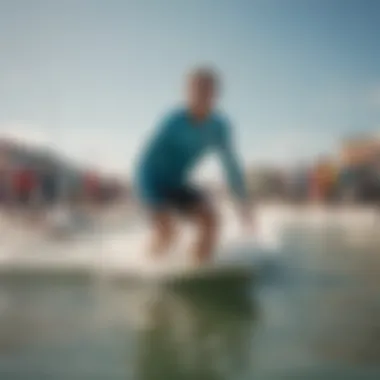
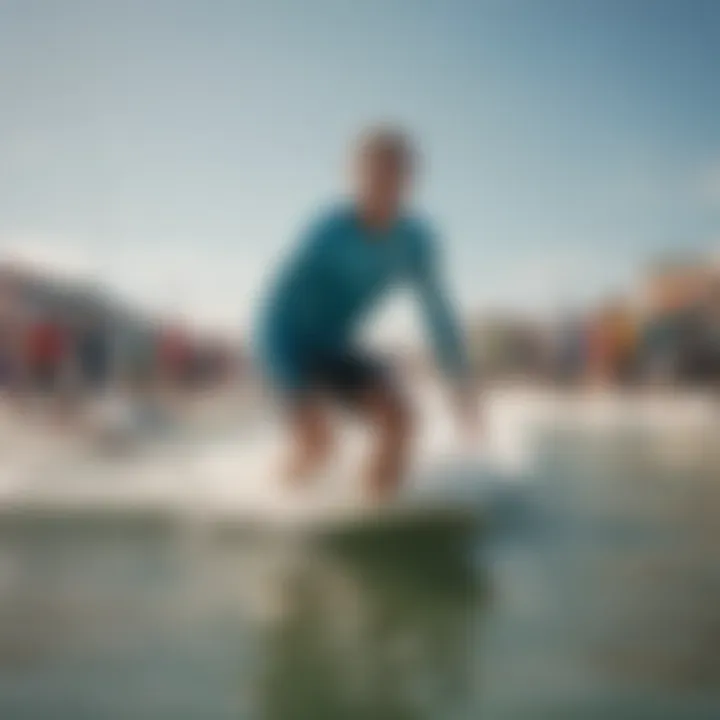
"In South Padre Island, surfing is more than just a sport; it’s an ethos. It connects us to each other and the environment in ways that foster community spirit and responsibility."
Surfing Community
The surfing community in South Padre Island is a melting pot of diverse backgrounds, united by a singular focus: the waves. Regulars may discover familiar faces among the lineup, each wave inviting stories and laughter. This familiarity cultivates an atmosphere where everyone feels they belong.
The locals are generous, often sharing insights about the best spots and optimal conditions, fostering an encouraging environment. Newcomers often witness how surfers look out for one another. It’s not uncommon for a seasoned surfer to offer pointers to a novice, which, in part, reflects the community’s spirit of support and inclusivity.
Events and Competitions
Events and competitions play a crucial role in the surf culture of South Padre Island, bringing together surf enthusiasts from different places. Tournaments range from local contests meant to showcase emerging talent to larger events that draw attention from across the state. These gatherings not only boost the local economy but also strengthen bonds within the community.
Various competitions throughout the year create opportunities for surfers of all levels to engage, learn, and grow. They offer a platform for athletes to showcase their skills while also serving as a congregating point for ocean lovers. Watching skilled surfers perform at their peak can inspire motivation for both beginners and seasoned pros. The energy of these events builds a vibrant atmosphere that reflects the passion and dedication shared by the surf community.
Safety and Best Practices
When it comes to surfing, safety is not just an option—it's a necessity. Surfing at South Padre Island may be thrilling, but it also demands respect for the ocean and its unpredictable nature. Understanding the elements of safety and best practices can enhance your surfing experience, keeping you and those around you safe while you enjoy the waves.
Understanding the Risks
Every surfer, whether a beginner or a seasoned pro, must grasp the potential hazards that come with the territory. The risks can vary depending on various factors, such as wave height, wind conditions, and local wildlife. Some common dangers include:
- Rip Currents: These water currents, which can carry surfers away from shore, are a significant concern. They can be deceptively strong, often forming in areas where waves break more vigorously.
- Shark Sightings: While shark attacks are incredibly rare, surfers should be aware of their presence. Knowing the local shark activity and being cautious while surfing during dawn or dusk can make a difference.
- Collisions: With crowded beaches, surfers must pay attention to their surroundings to avoid collisions with other surfers or obstacles like rocks and jetties.
Understanding these risks helps surfers make informed decisions about when and where to surf. As the saying goes, "better safe than sorry." And in surfing, this couldn't ring more true.
Preventive Measures
To minimize risks, practicing preventative measures is crucial. Here are several strategies that surfers can employ:
- Check Local Surf Conditions: Always keep an eye on surf reports. Websites and apps provide real-time updates about wave size, wind conditions, and tide schedules.
- Buddy System: Surfing with a friend not only makes the experience more enjoyable, but it also provides a safety net. Should anything go awry, having someone nearby can be vital.
- Wear Appropriate Gear: Consider wearing a leash, which keeps your surfboard attached to you. This reduces the chance of injury from a runaway board. A wetsuit can also protect against stings and scrapes.
- Know Your Limits: If the conditions are too advanced for your skill level, it's best to sit it out. As the old adage goes, "discretion is the better part of valor."
Keep in mind that proactive measures can make all the difference. By staying informed and prepared, surfers can fully enjoy the captivating waters of South Padre Island while prioritizing health and safety.
"The ocean is a powerful force, and while it invites us to play, it also demands respect."
In the end, embracing safety and best practices is key to maintaining a long and enjoyable relationship with the waves.
Environmental Considerations
Surfing is not just about riding the waves; it heavily interacts with the environment, making Environmental Considerations a crucial topic in this article. South Padre Island's unique ecosystems provide a breathtaking canvas for surf enthusiasts, but they also face challenges that require mindfulness and action. Protecting these ecosystems directly contributes to the long-term health of the surf culture, enhancing not just the experience of surfers, but the well-being of the local community and marine biodiversity.
Preserving Local Ecosystems
The natural beauty of South Padre Island is a treasure, but it’s one that can be easily compromised. Factors like pollution, erosion, and climate change pose serious threats to the fragile habitats that support not only marine life but also the surfers who cherish this locale. There are several steps that can be adopted to preserve these local ecosystems:
- Responsible Waste Management: Cleanliness is key. Always pick up after oneself on the beach. Even small bits of trash can have a devastating effect on marine wildlife. Litter can confuse animals, leading them to ingest harmful substances.
- Protecting Dunes and Vegetation: Coastal dunes serve as a natural barrier against storms and erosion. They should be respected and not trampled upon. Staying on marked paths helps conserve these critical areas.
- Support Conservation Efforts: Many organizations work diligently to protect marine ecosystems. Engaging in volunteer opportunities or donating to local conservation programs can have a lasting impact on the health of South Padre Island’s beaches and waters.
"We don’t inherit the earth from our ancestors, we borrow it from our children."
It’s essential for surfers to recognize their role in preserving the ocean's health. Engaging with the community through local events can foster a collective sense of responsibility toward environmental stewardship.
Sustainable Surfing Practices
Sustainable practices go a long way in ensuring that surfing remains a viable and enjoyable sport for future generations. The desire to ride the perfect wave should be paired with a respect for the environment. Here are some sustainable surfing practices to consider:
- Eco-friendly Surfboards: Opting for surfboards made from sustainable materials can minimize the ecological impact. Brands like Firewire Surfboards offer alternatives that are better for the planet without compromising performance.
- Sustainable Clothing: Wearing clothing made from recycled materials or organic cotton can reduce the overall footprint of surf gear. Several brands are now focusing on eco-conscious production methods.
- Carbon Offset Programs: For those who travel long distances to surf, consider participating in carbon offset programs. By contributing to renewable energy initiatives, you can help balance out the emissions from your travel.
Taking steps toward sustainability not only ensures a better tomorrow but enriches the surfing experience today. By understanding and integrating these practices into their routines, surfers can continue to enjoy South Padre Island while safeguarding its beauty for others and for the future.
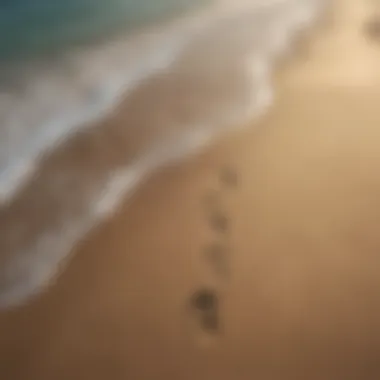
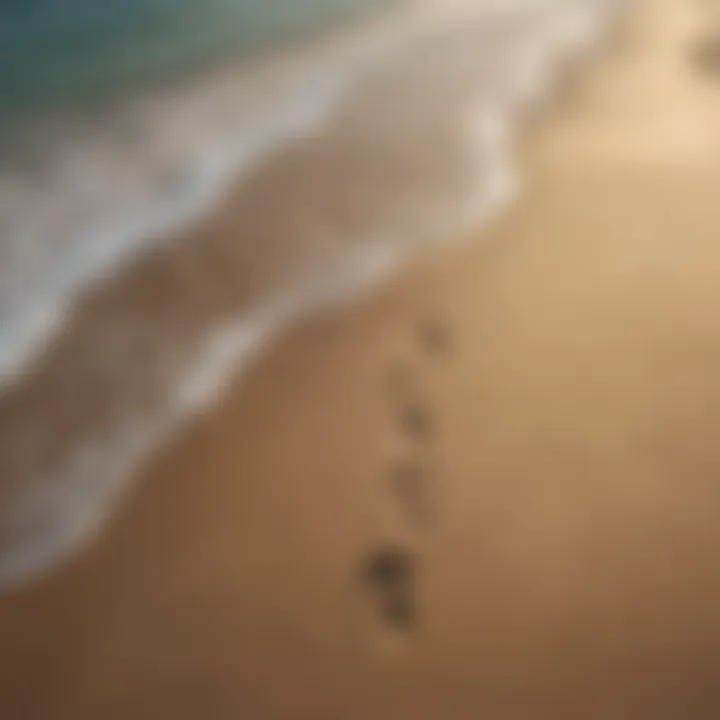
Learning and Improving Surf Skills
Surfing isn’t just a sport; it’s a journey of constant learning and improvement. South Padre Island, with its inviting waves and varied conditions, serves as an ideal backdrop for surf enthusiasts to hone their skills. Whether you're new to the crest of that first wave or an experienced wave-rider looking to refine your craft, focusing on learning and improving your surf skills is paramount. This section highlights essential techniques, benefits, and a few considerations to keep in mind as you navigate your path in the waters off South Padre Island.
Techniques for Beginners
Diving into surfing can feel like swimming against the current, particularly for those just starting. Here’s a breakdown of foundational techniques that every beginner should grasp:
- Paddling: It might seem simple, but effective paddling is critical. It’s not just about moving your arms; proper technique can keep you on the wave longer. Keep your hands cupped and use long, smooth strokes.
- Positioning: Whether you’re on a longboard or a shortboard, where you lie on your board can make or break your ride. Aim to position yourself slightly forward to catch waves but adjust as needed based on the wave size and type.
- Pop-up Technique: This is the moment of truth. Start flat on your stomach, then quickly push up with your hands while bringing your feet underneath you. Practicing this on dry land can build muscle memory before hitting the water.
- Balance: A solid stance is vital. Keep your knees bent, feet shoulder-width apart, and arms spread for balance. Engaging your core will help maintain stability while riding the wave.
"Surfing is not just a sport but a way of life. Every wave is a lesson in flow and balance."
By leveling up these fundamental techniques, beginners can enhance their confidence and decrease the likelihood of wipeouts.
Advanced Surf Techniques
For those seasoned riders looking to take their skill set to the next level, advanced surfing techniques are where the magic happens:
- Cutbacks: This maneuver involves turning your board back towards the breaking part of the wave as you ride it. It can dramatically improve your ride by keeping you in the pocket of the wave.
- Aerials: This technique is all about getting air by launching off the wave's lip. Mastering this will not only impress onlookers but also add flair to your surfing style. Start small and gradually work your way up.
- Top Turns: Essential for changing direction mid-ride, this move is executed at the peak of the wave. Timing it right can help you maintain momentum and flow.
- Wave Selection: Understanding which waves to ride can elevate your surfing game significantly. Study the breaks and conditions to select waves that suit your skill level while also challenging you.
Emphasizing these advanced techniques can lead to more rewarding and exhilarating surfing experiences.
In summary, whether you are at the beginning of your surfing journey or aiming to perfect those advanced maneuvers, each skill learned contributes to overall enjoyment and safety while riding the waves at South Padre Island.
Equipment Maintenance and Care
Taking care of surfing gear is an often-overlooked but crucial aspect of enjoying the waves. Surfboards and other equipment can take a beating, so regular maintenance extends their life and performance. Keeping your gear in top shape not only enhances your surfing experience but also ensures safety in the water. Surfers, whether they are just starting or have been riding the waves for years, need to be mindful of how they clean, store, and repair their equipment. Let’s delve deeper into two essential factors: cleaning and storage, followed by repairing damage.
Cleaning and Storage
Frequent cleaning is vital. Sand, salt, and debris from your surfing sessions can accumulate, possibly causing wear and tear over time. Rinsing your board with fresh water immediately after use helps remove salt that can corrode wax and oust surfboard integrity. Here are a few good practices for cleaning:
- Use a gentle sponge or cloth to wipe down the board.
- Avoid using harsh chemicals which can degrade materials.
- Regularly replace wax to ensure grip; old wax can create a slippery surface.
When it comes to storage, consider the environment. Storing your surfboard upside-down can help reduce pressure on the fins, avoiding warping or bending. Make sure to store it in a cool, dry place, preferably in a bag made specifically for surfboards. This not only protects the board from UV rays, which could damage its surface, but also prevents dings and scratches from accidental bumps. An organized space for gear contributes to easy access and less hassle when heading out to surf.
Repairing Damage
Even with careful maintenance, accidents happen. Dings and cracks can occur, and it’s critical to address these issues promptly to prevent further damage. Regularly inspecting your surfboard pays dividends; just like spotting a crack in your windshield early can prevent a larger issue later on.
Here’s a rough guideline on how to handle minor repairs:
- Assess the Damage: Determine if it’s a simple crack or a deeper puncture. If you can see foam, it might require more attention.
- Gather Supplies: For minor repairs, you’ll need epoxy resin and sandpaper, which you can often find at surf shops or online.
- Clean the Area: Before applying any resin, make sure to clean the damaged area thoroughly.
- Apply the Epoxy: Follow the manufacturer’s instructions regarding application and curing time.
- Sand Smooth: Once dried, sand the area to ensure a smooth surface.
Keeping your board in shape prevents water from permeating, which can lead to mold and deterioration of the internal structure.
"A well-maintained surfboard is like a trusty friend. It will always be there for you when you need it most."
By investing time and effort into maintaining and repairing your gear, you’re ensuring that your time on the water is enjoyable and safe. Simply put, it’s all about surf care that prolongs both your equipment's life as well as your surfing adventures.
The End
Surfing at South Padre Island is more than just a hobby; it's a way of life for many who call this sandy paradise home. In summarizing the key elements of this article, we appreciate the unique aspects of this location that attract surfers of all skill levels. This isn’t simply about catching a wave; it involves understanding the environment, the surf culture, and the sustainability efforts that keep this island a beautiful sanctuary for both surfers and marine life.
Recap of Key Points
Throughout this exploration, we’ve covered several essential topics:
- Geographical uniqueness: The island’s position along the Gulf of Mexico creates a variety of surf conditions.
- Historical context: Surfing here has a rich cultural backdrop, stemming from both local indigenous practices and the influx of surfing culture from the West Coast.
- Surf conditions: Understanding wave patterns, seasonal changes, and wind influences is crucial for every surfer.
- Surfboard choices: Different boards cater to different styles, and selecting the right one can significantly enhance the surfing experience.
- Safety practices: We’ve highlighted the necessary precautions to ensure a safe surfing session, recognizing the inherent risks involved.
- Environmental aspects: Sustainable practices are necessary to maintain the natural beauty and health of the island’s ecosystems.
- Local culture: The vibrant surf community, complete with events and competitions, brings people together.
- Skill development: Continuous learning keeps the sport exciting, with endless opportunities for improvement.
Future of Surfing in South Padre Island
Looking ahead, the surfing scene at South Padre Island appears poised for growth. Increased interest from tourists combined with local advocacy for sustainable tourism indicates a bright future. Continued environmental awareness will likely shape the surfing practices of tomorrow, focusing on protecting the island's resources for generations to come.
There’s also potential for more local competitions, highlighting the talent emerging from this region. With state-of-the-art surf schools popping up, new surfers can have access to quality instruction, paving the way for more participation in this water sport.
With these currents of change, South Padre Island is set to maintain its allure as a premier surfing destination. Educational initiatives on environmental care could nurture a community that is not only passionate about surfing but also committed to the conservation of its surroundings. In this way, local surfers can enjoy their favorite pastime while protecting the very locale that sustains it.















